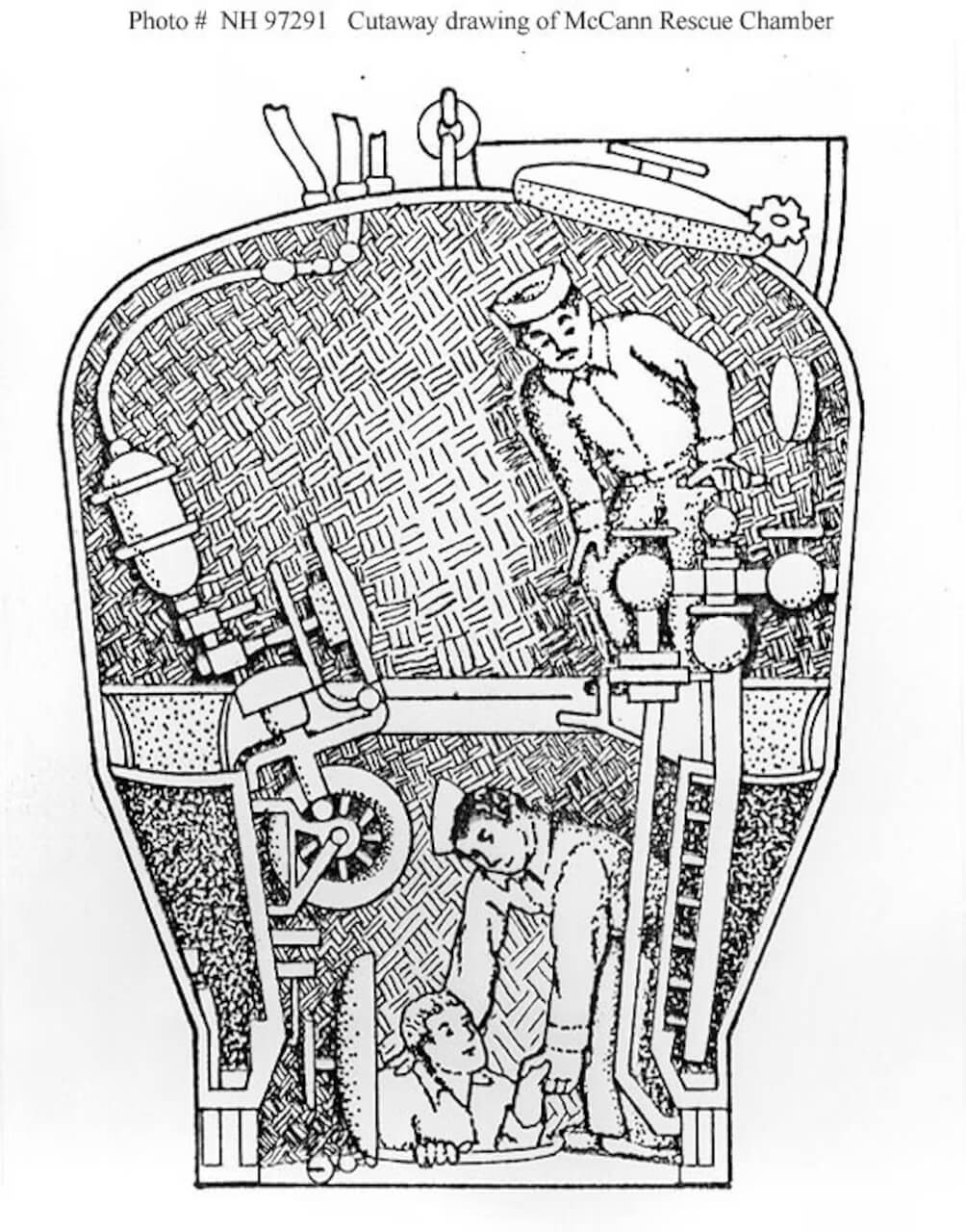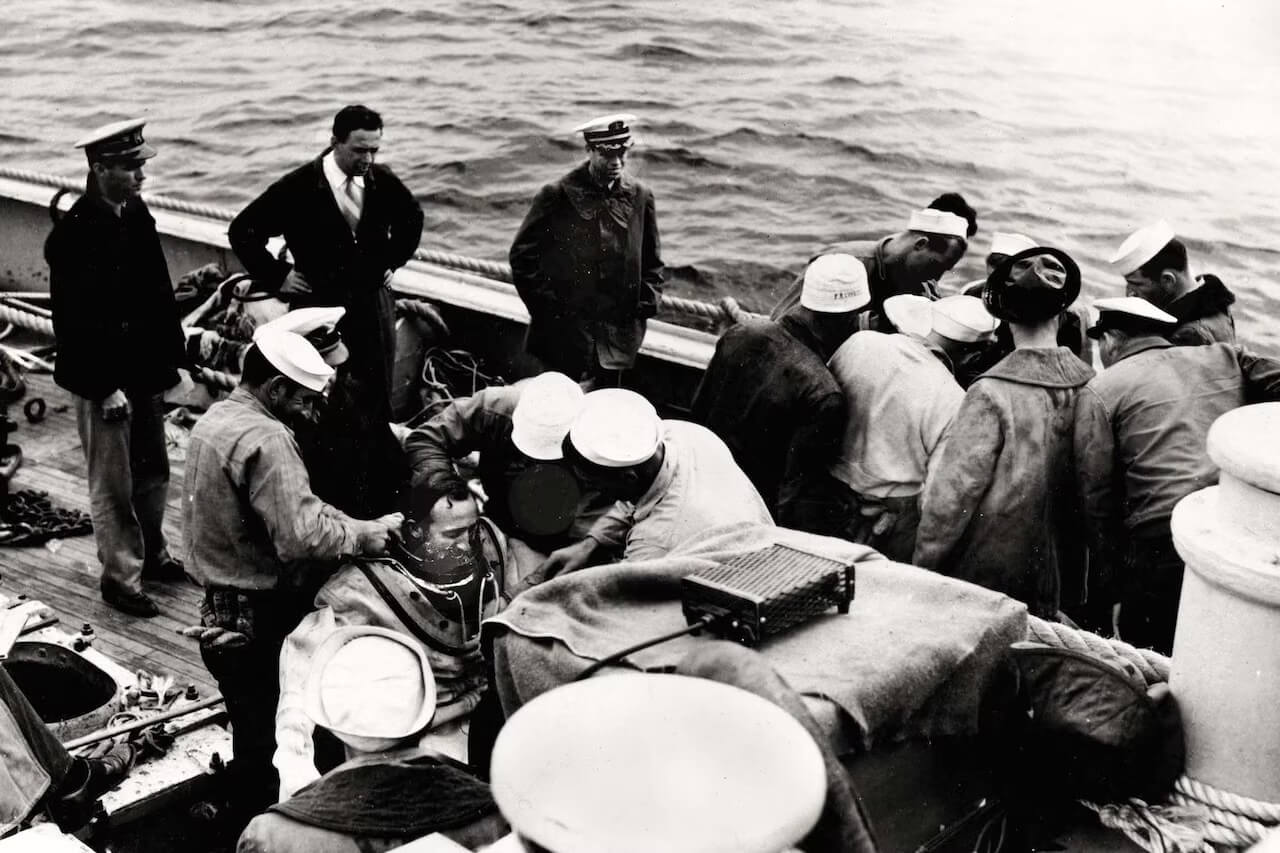Memorial Day Heroes: The Rescue of the WWII Sub USS Squalus
Refloated and renamed, USS Squalus would go on to sink a Japanese carrier and multiple merchant ships

[By Katie Lange]
Thanks to World War I and the advent of the submarine, U.S. naval divers mastered how to make and survive deep ocean dives. But by the 1930s, they were still trying to figure out how to successfully rescue survivors from sunken vessels.
They finally figured that out in 1939, when Navy Lt. Orson Leon Crandall and three other master divers used a new piece of equipment to rescue nearly three dozen sailors from a sub that sank during a training incident. Crandall's expertise and calmness under pressure earned him the Medal of Honor.
Crandall was born on Feb. 2, 1903, in St. Joseph, Missouri, to Marshall and Bertie Crandall. He had two brothers and a sister, all of whom were older.
Crandall enlisted in the Navy in 1922 when he was 19. For the next decade, he served on several ships before going into diver training in 1932. By March 1939, he held the rank of chief boatswain's mate and was designated a master diver, the highest level a diver can attain.
Only a few months later, a disaster off the coast of New Hampshire would require Crandall to utilize his expertise in the most harrowing of conditions.
On May 23, 1939, a diesel-electric submarine called the USS Squalus was practicing submerging at high speeds near the Isle of Shoals, an island chain off the coast of southern Maine, when it suffered a catastrophic valve failure. The sub — which carried 56 crew members and three civilian contractors — quickly filled with water and sank about 240 feet to the ocean floor.
Crandall was serving on the USS Falcon, which was tied up at New London, Connecticut, when the call for help came in. The Falcon was one of several salvage ships with divers that hurried to the scene to try to save anyone who was still alive inside the Squalus.
It took nearly a full day to prepare for the dangerous mission, but by the morning of the 24th, Crandall and about three dozen other divers were ready to get started.
"I remember that the water was rough and that the wind was pretty stiff, but after a while it calmed down some," Crandall recalled in a 1952 article in the Baltimore Evening Sun newspaper. "The descent was pretty fast — it took only about seven minutes to drop down to the 240-foot level where the submarine lay with her stern in about 12 feet of mud."
Shortly before noon, the Falcon lowered into the water a newly developed rescue device called the McCann-Erickson Rescue Chamber. Up until then, the chamber had only been used in training.
In theory, rescuers planned to lower the chamber via cables to the sub's deck, then seal it to one of the Squalus' hatches, according to Naval Institute archives. The crew would then blow the water out of the sub's chamber, open both hatches, and pull out the trapped submariners.

McCann Rescue Chamber on deck (Courtesy USN)

Courtesy USN
The process worked, but it took a long time.
"Because of the pressure, we could work for an average of only 18 minutes at a time. It took three hours to bring us to the surface," Crandall told the Baltimore Evening Sun, explaining that the slow ascent was necessary so they wouldn't get "the bends," a decompression sickness that happens when gas bubbles form in the blood stream from rapid changes in pressure.
Thanks to the skilled work of Crandall and three other master divers — Chief Petty Officer William Badders, Lt. Cmdr. John Mihalowski and Lt. James Harper McDonald — 33 men who survived the sinking were separated into four groups and rescued over the span of 13 hours.
 Courtesy USN
Courtesy USN
 Courtesy USN
Courtesy USN
At one point, Crandall narrowly escaped death. According to his Tampa Bay Times obituary, during one of his dives, carbon dioxide gas formed in his suit. As he lapsed into unconsciousness, he started to call out football signals — something he did as the quarterback of a shore-based Navy football squad. Thankfully, other crew members heard the strange chatter through his diving suit telephone and knew something was wrong, so they pulled him to the surface, according to the Tampa Bay Times.
Over the next three months, divers and salvage crews worked to bring the Squalus back to the surface and retrieve the remaining 26 men stationed at the rear of the vessel who didn't survive. Crandall made more than 60 dives as part of that effort. The submarine was finally raised on Sept. 13, 1939. All but one of the sailors' bodies were found.
According to Naval Institute archives, a Navy court determined a mechanical malfunction caused the disaster. As a result, submarine hull valves were converted to quick-closing flapper valves to prevent future tragedies.
For Crandall's leadership, bravery and devotion to duty during the hazardous Squalus rescue, he was awarded the Medal of Honor on Jan. 19, 1940, during a ceremony in Washington, D.C. His fellow master divers during the mission — Badders, Mihalowski and McDonald — also received the honor.
Crandall remained in the Navy through World War II, and he became a commissioned officer and took part in several salvage and diving-related missions. He transferred into the Fleet Reserve in June 1946. He retired in December 1952 to St. Petersburg, Florida, where he decided to lay down roots.
At some point along the way, Crandall married a woman named Mary. According to the Tampa Bay Times, he operated a fishing guide boat out of Johns Pass during his retirement.
Crandall died May 10, 1960, and was buried in Arlington National Cemetery. The heavy salvage ship USS Crandall, which served the Navy from 1967 to 1993, was named in his honor.
As for the Squalus, it was decommissioned in November 1939, renamed Sailfish, and recommissioned on May 15, 1940. It was decommissioned again after World War II. Its conning tower was cut away and can now be found in a park at the Portsmouth Naval Shipyard where memorial ceremonies are held every year in May.
The opinions expressed herein are the author's and not necessarily those of The Maritime Executive.

